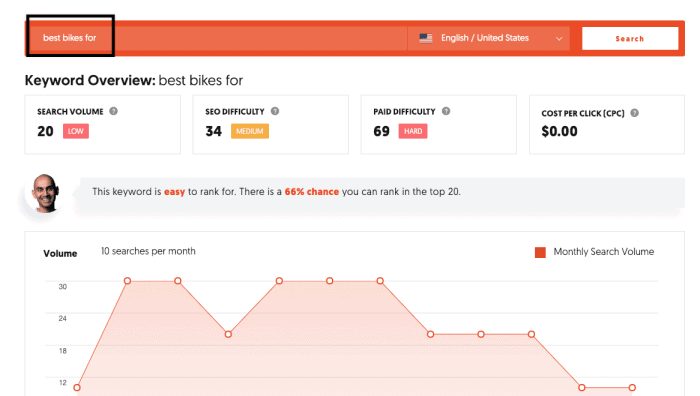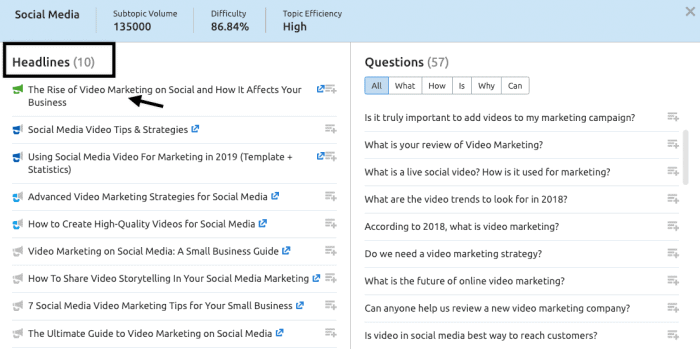Creating your first video is an exciting step. It can also be nerve-wracking.Whether you're using YouTube, Instagram, or TikTok, getting in front of the camera can feel scary.But what if using video to market your business could be fun and easy?
Below are tips to help you create a video marketing strategy! Learn how to:
- Write effective scripts
- Capture the attention of your viewers
- Post video on social media
- Identify what camera, lighting and additional equipment you'll need to get started
- Create high-quality videos for social media, your website, blog, and more!
Video Marketing Strategies: How to Use Video to Market Your Business
Why Use Video Marketing in Your Business
Video marketing offers endless content to your website and blog and gives your visitors the opportunity to see the guy or gal behind that great content. Use it for everything from educational to hyper-local videos.With the popularity of YouTube (We watch over 6 billion hours on YouTube per month!!) adding video to your online presence can be a game changer for your business.With over 2 million daily active users, Periscope's meteoric growth is nothing to scoff at.Statistics show that 90% of people state that video was a driving force behind their online purchase. (Internet Retailer Study) Those are telling stats.Most people have to take the first step and that's scary.Whether it is fear of the camera or a fear of the unknown, stepping out there can be the hardest part. But now is the time to put on those big girl (or boy) pants and make it happen.But before you go diving in, let’s get you prepped with the first 3 steps to your video success.
3-Step Process to Create High-Quality Videos
1. Choose Your Topic
Your first stop is video topic ideation. Here you'll research, identify, and then create the topics that matter most to your audience.This process is a simple research approach that gets me headed in the right direction. You will use a few tools to find trending, relevant, and topical video content to create.
- YouTube
- BuzzSumo
- Ubersuggest
Here's how: 1. Go to YouTube and search for your top 5 competitors. Scroll through their most recent videos. What type of video content are they creating? What's received the most views and engagement?
- What’s their video style? Are they high-energy, laid back, extremely professional?
- What's their video length? Are they long form, short form, quick and to the point or lengthy (20 minutes vs. 2)
2. Go to BuzzSumo and search by your competitors domain. The tool will list their content based on total engagement. You're
- Take note of the topics Your next step to video topic creation is answering the questions below.

3. Go to UbersuggestThis free keyword tool will help you uncover search volume, CPC, and competition for every keyword.Since I started using this tool several years ago, Neil Patel has made many helpful updates.First, add your keyword. But don't go broad or generic.For example, if I were running a blog about cycling, I'd stay away from a search on "best bikes" and instead get specific around your topic.I'd use the long tail keyword search "best bikes for" to get a long list of possible keywords.

Second, look to the note on ranking. How hard will it be to rank for this particular keyword?Before you create any video, you must answer an empathic, "YES" to each of these questions.
Is your topic relevant to your audience?
Is it interesting information, and does it provide a solution or answer to their needs?Look to your local news, industry headlines, and tools like SEMrush for keyword research on high demand topics.

Does your topic offer value to your viewers?
You'll lose viewers as quickly as you capture their attention if your video:
- Rambles aimlessly
- Has no key takeaway
- Doesn't offer a solution
- Isn't interesting or engaging
- Lacks emotional appeal
- Parrots what others are already saying
- Doesn't include a call to action
As you begin to research topics, always look at it from the perspective of your video viewer.What value does it offer and what will they be able to do better, have more of, increase in their business after watching?If you can't give solid answers to those questions, ditch the idea or topic.
Does your content have an emotional appeal?
Can you share a funny, poignant or inspiring story? Tapping into emotions isn’t necessary. However, it does help your viewers connect with you, your business and your message.
2. Create Your Script
- Outline your key points – What is the number one goal of your video?
- Include information that will connect with your audience. For example, a personal story that relates to your topic.
- Offer something that adds value to their life, solves a problem, gives them hope or shows them how to do something.
- Create a very clear call to action. What do you want them to do (opt in to your newsletter) or where what would you like them to check out (your new website).
- Now practice, practice, practice! I choose to do this in front of a mirror but you can also try it out on a loved one (This would be a supportive loved one that offers constructive, not destructive criticism!)
- Time your content to ensure you move through your video quickly. (The average viewer won’t watch a video longer than 2 minutes)
- Create note cards and position them near your camera or use an online teleprompter to highlight your key points.
3. Choose the Right Equipment
Video EquipmentHave you purchased a video camera? For me, I'm typically either on my Macbook Pro or my iPhone 6s Plus. Both provide an exceptional experience in both sound and visual quality.But if you're looking for something a little different, here's some great advice from Omni Core Agency. (see their camera recommendations by clicking the link)
- DSLRs offer the best versatility when it comes to capturing both photos and video. If you use a lot of multimedia or want to blend photography and vlogging, choose a camera that can do both well.
- Action cams are the best fit for bloggers who want to do vlogging on the move, whether it’s capturing their adventures or putting viewers in a first person point of view.
- Cameras that require interchangeable lenses are not for the faint of heart. If you’re a beginner, stick to something simple and affordable before investing in expensive equipment that you might not need or use.
- Figure out your needs first. Depending on the type of shooting you’ll be doing, you may need tripods, a camera with low-light recording capabilities, or enhanced audio. Sit down and really plan out how you want to use video to enhance your blog and then find a camera that can match your needs.
Tripod
- I love the flexibility of the Gorillapod!
- I also use this tripod/selfie stick for events when I need to move around or capture unique camera angles.
Lighting While natural lighting is always the best way to go, there are alternatives. Below is listed from least to most expensive.
Just remember, when it comes to video and creating your online persona, Be Yourself!Creating your brand is about building credibility and trust between you and your audience. When who you are is accurately depicted in your videos, people will respond.Plus, being YOU on video is so much easier than acting!So get out there and start your video blogging journey!
About Rebekah Radice
Rebekah Radice, co-founder of BRIL.LA, has traded narcissism for purpose. When not driving growth, you'll find her tricking family into thinking she's Emeril Lagasse - likely covered in marinara. The spotlight was fun, but impact is better. These days she's using 20+ years of brand brilliance for good.
